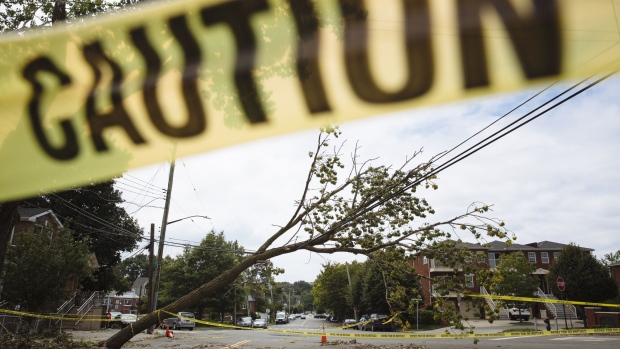May 1, 2024
Extreme Weather Is Driving More US Power Outages, Studies Show
, Bloomberg News

(Bloomberg) -- For decades, residents of eastern Queens in New York City have complained that they’re more likely to lose power when extreme weather hits, even as lights in other parts of the city stay on. A new study that looks at power outages across New York state suggests they’re right. Its broader conclusion — that different areas, even within the same neighborhood, can be more vulnerable to power outages — aren’t just limited to New York.
“We’re focusing on New York state, but power outages are a growing problem nationally,” says Nina Flores, a doctoral student at Columbia University and lead author on the study, which was published Wednesday in PLOS Climate. She points to both the nation’s aging electric grid and damages from storms made increasingly severe by climate change.
A separate analysis published last month by the nonprofit research group Climate Central found that between 2014 and 2023, the US experienced twice as many weather-related power outages as it had during the prior decade. Nationwide, some 80% of power outages that affected at least 50,000 people were driven by weather, according to the report.
Examples of weather-related outages are everywhere. In 2021, the effects of winter storm Uri led to 4.5 million Texas residents going without electricity as temperatures dipped below 6F (-14C) — some for as long as four days. That same year, hundreds of thousands of people in Louisiana found themselves sweltering after Hurricane Ida knocked out electricity as the heat index exceeded 100F (38C). Ida also cut power to tens of thousands of people in New Jersey.
The uptick in power outages is coming as the US embarks on an energy transition that, in the interest of slashing greenhouse gas emissions, will make people even more reliant on electricity. At the same time, not having access to electricity during extreme weather — losing access to air conditioning during a heat wave, for example — can make that weather deadlier.
“We’re moving away from power outages from just being an inconvenience to something that can potentially impact a person’s health,” Flores says.
The Columbia researchers focused on New York because the state provides more granular data than is typically available, including power access down to the zip code level in intervals of roughly 30 minutes. That level of specificity “is really helpful for getting to look at some of the environmental justice questions that we had related to power outages,” Flores says.
Across New York, the study found that between 2017 and 2020 roughly 40% of all power outages overlapped with instances of extreme weather, and that those outages weren’t evenly distributed. Certain regions — eastern Queens, Upper Manhattan, and the Bronx in New York City, along with the Hudson Valley and Adirondack regions — were more likely to lose power during severe weather. Many of those areas overlap with communities that are already socially vulnerable.
“It’s communities that are already disproportionately burdened by a range of social and environmental exposures,” says Joan Casey, an assistant professor in the department of environmental and occupational health services at the University of Washington and co-author on the study. “So things like poor air quality, lack of green space, lower water quality or social exposures like structural racism or poverty or lower quality housing.”
These vulnerabilities make it more difficult to respond to an outage, and tend to make the power cut itself worse for those experiencing it. In rural homes that rely on well water, for example, losing power can mean losing access to water, since well systems rely on electrical pumps to bring water into the home.
People living in homes with poor insulation are more susceptible to temperature extremes during power outages than those in higher-quality housing, Casey notes. By contrast, wealthier people can afford to invest in insulation, generators, solar panels and battery backups to make it easier to ride out an outage — which they’re also less likely to have to do.
The solution, Casey says, is for the US to upgrade its infrastructure. “We have power lines that need to be upgraded. We have wiring in buildings that are now in many cases over a century old. We have a mismatch of voltages,” she says. “We have a large number of problems that will be pretty expensive to fix, but that is a key piece of the problem.”
Read Next: The Century-Old Transmission Line Is Getting a 21st Century Upgrade
©2024 Bloomberg L.P.






